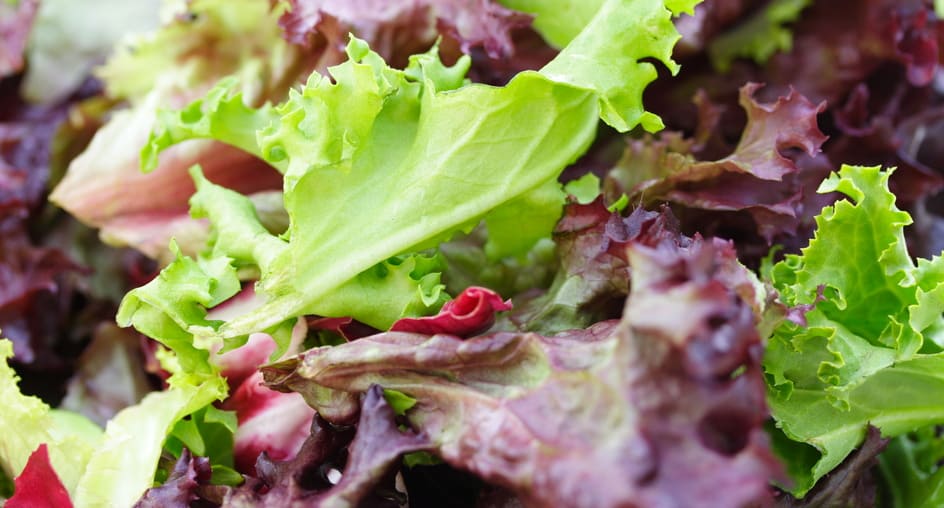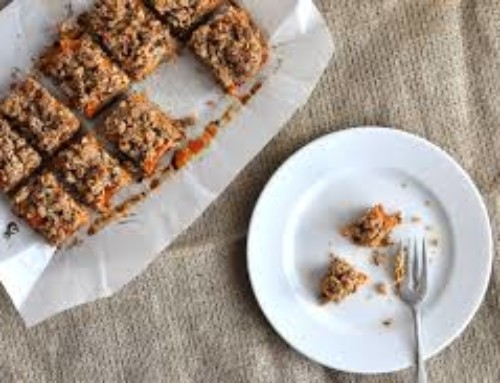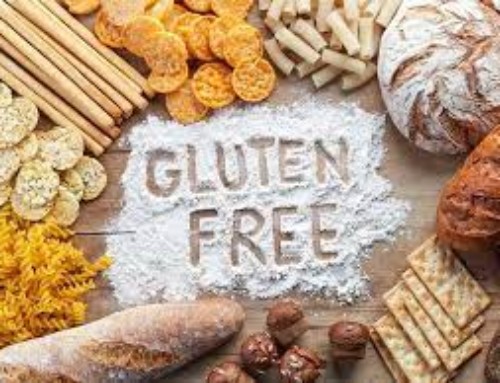If you’re one of the millions of Americans on a diet, you know how difficult it can be to shed extra weight – and keep off. Dieting is also expensive, costing Americans nearly $40 billion each year. It’s fair to say that dieting in the U.S. is out of control.
Despite these staggering statistics, Americans are getting fatter. How is it that we’re spending so much time and money on diets, yet obesity rates continue to rise? Could the Standard American Diet be inherently flawed?
The uncertainty over what to eat has put dieting in the running for America’s new national past time. Being human, we are unique and therefore have unique nutritional needs as compared to our family members, neighbors, co-workers, and friends. We also have different nutritional requirements at certain stages of our lives (e.g. during rapid growth, pregnancy, aging, etc.).
But no matter who you are, advertisers are ready to sell you the “perfect” diet supplement, plan, or book promising to help you lose weight and achieve optimum health. You’ve probably heard of these so called “fad” diets: Acai Berry Diet, Atkins Diet, Cabbage Soup Diet, HCG Diet, Negative Calorie Diet, Low Fat diet, Low Carb diet, 3-Day diet, Zone Diet, and South Beach Diet. There are dozens more.
In her classic natural health book, Food and Healing, Annmarie Colbin discusses the pros and cons of some of the more popular ways of eating in American. Let’s take a closer look at these five diets.
The Pritikin Diet
The Pritikin Program was developed over three decades ago by scientist Nathan Pritikin. Pritikin developed this low-fat diet and exercise program after curing himself of heart disease using these measures. The Pritikin diet focuses on foods in their natural state such as whole grains, beans, vegetables, fruits, egg whites, and small amounts of lean meat, chicken, fish, skim milk, and cottage cheese. The program excludes all fats, salty meats, fish, poultry, full-fat dairy products, soybeans, table salt, refined carbohydrates, whole eggs and yolks, caffeinated drinks, soda, and alcohol. Daily caloric intake is as follows:
- 10% fats
- 10-12% lean protein
- 80% complex carbohydrates.
Research supports the effectiveness of the Pritikin Program in preventing and reversing western diseases caused by the SAD such as heart disease, type 2 diabetes, hypertension, and obesity. It can be a very healing diet for those who are chronically ill.
However, due to the limitations on dietary fat intake, this program should be modified for long term health. Depriving the body of healthy fats can lead to a deficiency in fat-soluble vitamins and essential fatty acids. Rather than completely eliminating fat and salt, a more balanced approach would be a diet low in fat, salt, animal protein, and sugar, and high in whole grains, vegetables, and fruits.
High-protein diets
Probably the most famous high-protein diet is the Atkins Diet. This type of diet is aimed at serious weight loss. It consists of all types of animal proteins, plenty of fats in the form of cream, butter, mayonnaise, and oils, non-starchy vegetables, citrus fruits, small amounts of sweet fruits and starchy vegetables, coffee, tea, diet soda, artificial sweeteners, and 8-10 glasses of water per day. Foods to be avoided include sugar, white flour, white rice, corn, whole grains, pasta, beans, peas, and legumes.
This is not a balanced diet. The relative proportions of protein are too high and carbohydrates too low. High-protein diets require a high water intake for metabolism. Some of this needed water may be taken from the body’s own tissues, which results in a loss of water weight and gives the dieter a false sense of success.
The lack of carbohydrates will eventually trigger the dieter to binge as the body seeks to rebalance itself. Without adequate carbohydrates the body goes into a state of ketosis. Ketosis is the process of the body burning stored fat for energy. Symptoms of ketosis include acetone breath (fruity breath odor), loss of appetite, lower blood pH, nausea, fatigue, constipation, muscle cramps, and headaches. The adverse side effects of ketosis include osteoporosis, kidney disorders, heart palpitations, gout, and calcium deficiency. High-protein diets are very difficult to follow for an extended period of time.
Low-calorie diets
Weight Watchers is arguably the most popular low-calorie diet in American. The premise behind Weight Watchers is that to lose weight a dieter should aim for a negative energy balance. In other words, the amount of energy (calories) consumed should be less than the amount of energy (calories) used.
Many dieters have lost weight following a low-calorie regimen, but they may not be a whole lot healthier. That’s because low-calorie diets in general contain the same types of foods as the SAD, but in lesser amounts. They discourage foods such as sweets, cream, sauces, eggs, fatty foods, nuts, dried legumes, soups, and dried fruits, some of which are very nourishing to the body.
While this type of diet may be the easiest to follow for many Americans, it isn’t necessarily the healthiest way to eat. Many dieters reach for harmful low-calorie “foods” such as diet soda and artificially sweetened packaged foods. These take the place of healthful, nutrient-dense foods such as eggs, nuts, dried legumes, and dried fruits. Choosing the right foods is just as important as eating the right amounts. Counting calories and weighing and measure foods alone will not improve health.
The Fortified Natural-Foods Diet
This approach to eating was popularized several decades ago by some alternative health pioneers including J.I. Rodale, the founder of Prevention Magazine. The Fortified Natural Foods Diet focuses on preventing disease through a natural foods diet with added fortifiers and vitamin and mineral supplements. Its proponents believe that the body must be nourished at the cellular level for optimal function – and the best foods for our cells are natural, whole, organic foods. Vitamin and mineral supplements are required for two reasons: first, our soil is depleted of its nutrient content; and second, we may not take in a sufficient array of nutrients in our daily diet. Supplements serve as medicine for current illnesses and as “insurance” help to prevent disease in the future. The body will automatically excrete any excess nutrients.
The Fortified Natural Foods Diet emphasizes whole grains, beans, vegetables, fruits, nuts, seeds, naturally raised meat, chicken, fish, eggs, game, unpasteurized dairy products, herbs, spices, some natural raw sweeteners, and sea salt. The “fortifiers” include brewer’s yeast, blackstrap molasses, wheat germ, bran, protein powders, spirulina, lecithin, desiccated liver, dolomite, and others. Supplements include vitamins, minerals, digestive enzymes, etc.
The Fortified Natural Foods Diet excludes white sugar, flour, and rice, processed foods, junk foods, conventionally grown beef or chicken (with synthetic feed and/or hormones), coffee, tea, chocolate, table salt, and pepper.
There are a plethora of testimonials regarding the healing powers of The Fortified Natural Foods Diet. As you can see, it’s a great improvement over the SAD.
Nutritional supplements have proven to be extremely effective in treating ailments caused by nutrient deficiencies, such as pellagra, beri-beri, scurvy, night blindness, poor appetite, failure to grow, anemia, lack of bone density, and neuromuscular irritability. However, when vitamins and minerals are consumed in addition to a well-balanced, whole foods diet as “insurance” an imbalance will occur. The range of nutrients present in a whole food is balanced in the proper ratios needed for assimilation by the body. Taking a single nutrient in supplement form may cause a relative nutrient deficiency of the other elements that usually come packaged with that nutrient in a whole food. This may cause the body to seek out something to correct the deficiency resulting in food cravings or the “munchies”. Supplements are powerful healing tools and should be taken only when needed to correct a deficiency. The best “insurance” against disease is a healthy lifestyle, which includes a balanced, whole foods diet.
The vegetarian diet
Vegetarianism has been around since at least the sixth century B.C. The Greek philosopher Plato was a vegetarian. The vegetarian diet avoids all animal flesh foods. There are three types of vegetarianism: 1) Ovo-lacto vegetarianism, which includes milk and eggs, 2) Lacto vegetarianism, which includes only milk and milk products, and 3) Veganism, which avoids all products of animal origin including honey. Some vegans also avoid wool, leather, and certain cosmetics and soaps derived from animal products.
There are two main motivations for following a vegetarian diet; moral and health reasons. Some followers believe it’s wrong to kill animals for a food source. Others believe animal protein is unhealthy because our bodies were not built to digest it properly.
Vegetarianism has many health benefits. Vegetarians generally consume more fiber, fruits, and vegetables than meat eaters. Their diet is typically lower in fat than meat-based diets, which reduces the risk of high blood pressure, obesity, type 2 diabetes, osteoporosis, and many cancers. Well-planned vegetarian diets provide sufficient amounts of all the essential nutrients. However, strict vegetarians and vegans should be mindful of their intake of vitamin B12. A deficiency can cause irreversible nerve damage. Sea vegetables and soy foods are good sources of B12. A balanced vegetarian diet should include a variety of organic plant foods, such as vegetables, fruits, whole grains, legumes, nuts, and seeds.
Vegetarians and vegans can get into trouble when they over indulge in refined sugar and/or honey. Because sugar is a pure carbohydrate it can cause a relative protein deficiency and weaken the body. Excess sugar consumption will cause vegetarians to get sicker faster than their meat-eating counterparts. Choose whole, organic foods to promote health. Limit or exclude processed foods, such as chips, cookies, fast food, junk food, and sweets. If you’re avoiding meat and binging on junk food, you’re not a healthy vegetarian!
The macrobiotic diet
Macrobiotics is more a way of life than simply a diet. A macrobiotic diet emphasizes whole grains, local, seasonal, organic vegetables, and beans (for protein) in roughly the following percentages:
- Whole grains (brown rice, barley, buckwheat, corn, oats, millet, rye, etc.): 50-60%
- Vegetables: 25-30%
- Beans & legumes: 10-15%
- Miso soup: 5%
It permits smaller amounts of sea vegetables, nuts, seeds, soy products (e.g. miso, tofu, and tempeh), salty condiments (e.g. tamari soy sauce, umeboshi, and sea salt), and white fish on ocsasion. All foods should be chewed very well, especially every bite of grains, which should be chewed 50 times! Cooking typically involves light steaming or stir-frying, but some raw food is considered acceptable.
Macrobiotics forbids all meat, poultry, eggs, dairy products, most fruits, all nightshade vegetables (e.g. potatoes, eggplant, peppers, and tomatoes), most spices, coffee, most teas (except green tea), alcohol, soda, refined sugar, refined flour, artificial ingredients, and canned or frozen foods.
A fundamental principle of macrobiotics is the yin-yang principle, or the theory of opposites. The idea behind this theory is that different foods possess different energy fields, which need to be balanced to achieve optimum health. Substances such as sugar, alcohol, and coffee are considered extremely “yin” in their effects and can be overstimulating if consumed in excess. Foods that have extreme “yang” effects include meat, poultry, and eggs, which can cause stagnation if over-consumed. Whole grains are considered to be at the center and therefore the best foods to eat. In this way, a macrobiotic diet is though to create balance in the body and an overwhelming sense of well-being.
There is myriad anecdotal evidence of the healing power of macrobiotics for chronic disorders such as cancer, type 2 diabetes, chronic fatigue syndrome, and fibromyalgia. Although a macrobiotic diet can be quite healing, some find the food choices too restrictive and the lifestyle too rigid for the long term. A more balanced approach would be to add more fish, beans, fruit, and salad; to reduce the proportion of grains while adding more variety (not just brown rice); and to include more herbs and spices.
Hopefully your next and final dieting experience will be a true lifestyle change from the SAD to a whole foods diet. Contact me to schedule an appointment today!
Until next time, make every bite count!








Leave A Comment
You must be logged in to post a comment.